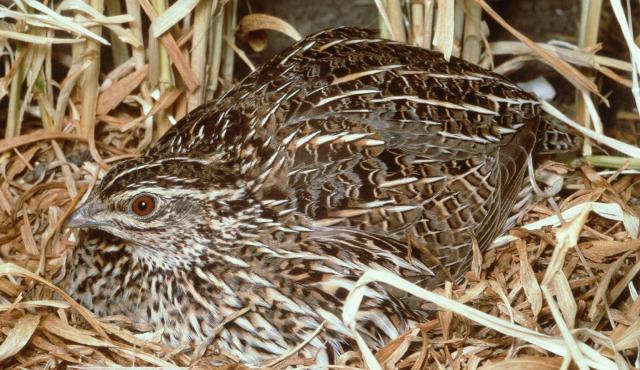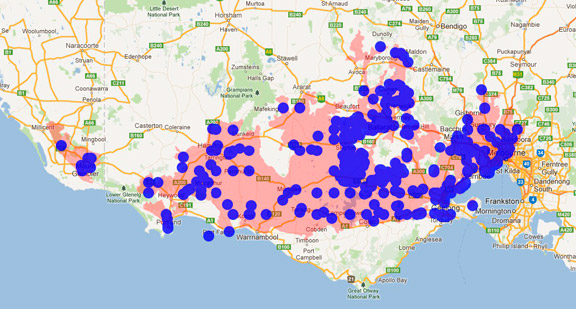A range of teacher professional learning programs will be developed to accompany the Biodiversity of the Western Volcanic Plains online outreach...

Stubble Quail
Coturnix pectoralis
Breeding season is most commonly spring through to early summer although it is dependent on rainfall. These birds nest on the ground under tussock grasses. Outside the breeding season they tend to form small groups. In the breeding season they form monogamous pairs. Clutch size is between 7 and 14 eggs. Incubation is for 18-21 days. Both sexes guard and care for the young until they are about 6 weeks old.
| Details | Description |
| Type | Bird |
| Group | Quail |
| Identifying Characteristics | |
| Distinctive Markings | Each feather has a cream stripe down the middle. |
| Diet | Omnivore but mainly feeds on grain. Opportunisitic foragers ranging from cultivated cereals to pasture plants or weeds. Supplements diet with clover, insects and some crustaceans. |
| Habitat | Open grassland, saltbush or spinifex. Well adapted to stubble, cereal and lucerne crops. Prefers areas of tall, dense ground vegetation. |
| Native Status | Native to Australia |
| Sounds | Clear, ringing "cheery - wit" and "too - too - weep". |
| Taxonomy | |
| Phylum | Chordata |
| Class | Aves |
| Order | Galliformes |
| Family | Phasianidae |
| Genus | Coturnix |
| Species | pectoralis |

Distribution maps indicate current and historic locations where species have been sighted.
Source: Atlas of Living Australia
| Conservation Status | |
| DEPI Advisory List | Not listed |
| FFG Act | Not listed |
| EPBC Act | Not listed |
The conservation status of species is listed within Victoria and Australia.
The Department of Environment and Primary Industry (DEPI) Advisory List consists of non-statutory advisory lists of rare or threatened flora and fauna within Victoria.
The Flora and Fauna Guarantee Act 1988 (FFG Act) lists threatened species in Victoria. Under the Act, an Action Statement is produced for each listed species.
The Environment Protection and Biodiversity Conservation Act 1999 (EPBC Act) is the Australian Government’s key piece of environmental legislation, listing nationally threatened native species and ecological communities.



